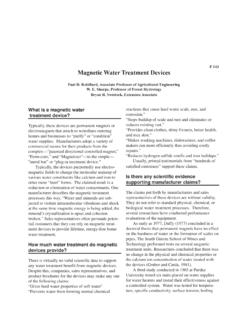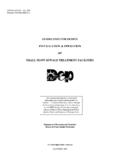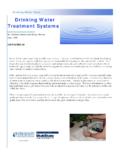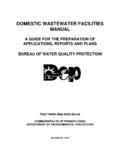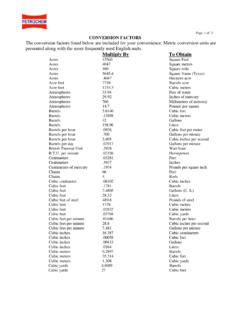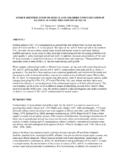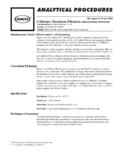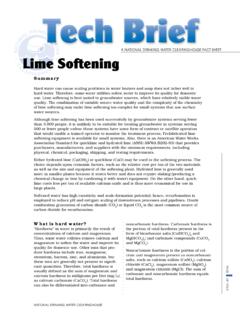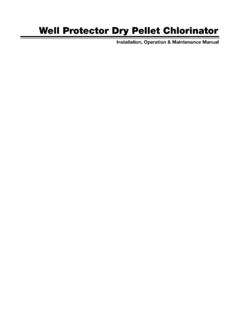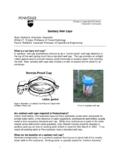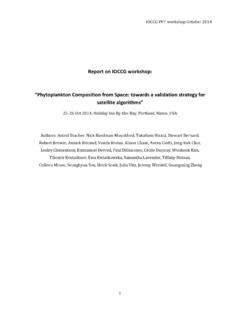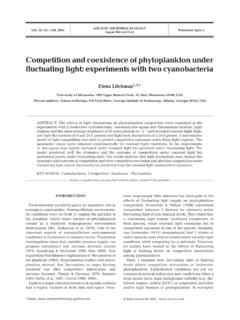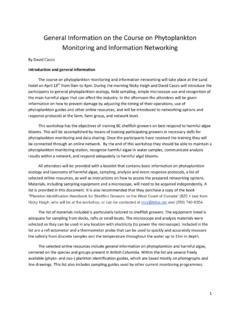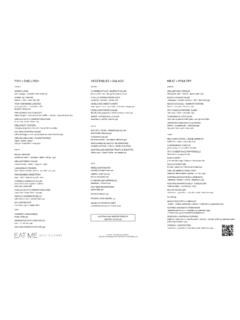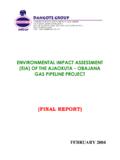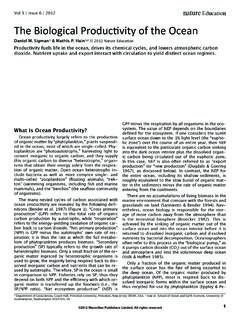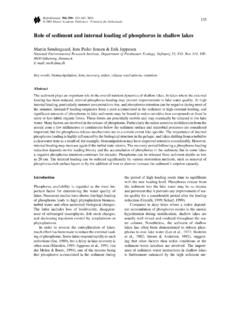Transcription of Standard Operating Procedure for Phytoplankton …
1 Standard Operating Procedure forPhytoplankton SampleCollection and PreservationGrace Analytical Lab 536 South Clark Street 10th Floor Chicago, IL 60605 April 13, 1994 Standard Operating Procedure forPhytoplankton Sample Collectionand and ApplicationThis Standard Operating Procedure describes the sampling and preservation of phytoplanktonsamples taken for the GLNPO open water Great Lakes of MethodPhytoplankton samples are created from a composite of water samples taken at discrete depths(surface, 5M, 10M, and 20M) with the rosette. Aliquots from each depth are combined, andapproximately 1 L of the composite sample is preserved with Lugol's Solution for analysis at and Waste HandlingPreservation of the Phytoplankton samples with Lugol's solution must take place in a hood, andgloves and safety glasses should be and Supplies960 mL plastic sample bottle1 gallon cubitainerRepipetter with 10 mL delivery capabilityDistilled or super Q H2 OGlacial Acetic AcidI2 KIHotplate1L FlaskOpaque 1L containerMagnetic Stirring BarGlass 's Solution: Prepare at least one week prior to a Mettler balance or equivalent, measure 100 g KI and 50 g of I2.
2 Cover the I2reagent with tinfoil as it is light sensitive and will 900 mL Super Q H20 and dry chemicals in a large flask. This should beperformed in a fume a magnetic stir bar and place on hotplate equipped with stirring for Phytoplankton SampleCollection and slightly while stirring to facilitate dissolution of the dry chemicals. Do Not Boil! about an hour, once the solution is completely dissolved, pour into an opaque containerusing a glass funnel. Add 100 mL Glacial Acetic Acid to container and cap tightly. Invertseveral times to mix container with date, contents, and pH (usually around ). collection and PreservationNote: Steps are generally done by the ship contractor or EPA personnel. GLAS contractpersonnel will conduct this task when 1 L of water from each of the Niskin bottles on the rosette from 20M, 10M, 5M and 1M,and add them to a 1 gallon cubitainer.
3 This is the composite the sample by gently turning the cubitainer over several approximately 1 L of the sample into the plastic sample bottle which has been labeled withstation, sample number and the Biology lab add Lugol's solution ( ) to make the concentration 1%. If the sample nearlyfills the entire sample container, add 10 mL of Lugol's solution to the sample. If less sample hasbeen added to the container, adjust the volume of Lugol's solution that is added to achieve a 1%preservative must be stored in the dark and under refrigeration. Store the sample in the areadesignated by the sample coordinator.
